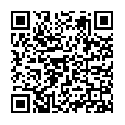Mistakes made in the past can come back to haunt you in the present. This fact remains true for mobile app design as well. Designing errors can come back to impact the popularity of your app. They could be the difference between success and failure.
Yes, designing errors can destroy your app. In the cut-throat world of mobile apps, you cannot afford to make these errors. As a business, you’re going to spend a lot of money to build an app and you expect it to deliver high ROI. This won’t happen, if you’ve an app whose design is not up to the mark.
Let’s take a look at four such design mistakes that have the power to break your app:
1. Disregarding first impressions.
Think love at first sight, think app design. Saying your app is going to face a lot of competition out there, is an understatement. The competition is going to be humongous. This is why first impressions matter. Your primary aim is to make sure your app captures the attention of users as soon as they open it.
This is important because app abandonment rate is as high as 20 percent across all categories. If you don’t want your app to be a part of this 20 percent, start focusing on making a great first impression on your users. This can be done by ensuring your app loads quickly and still takes users through engaging animations that hold their attention.
2. Ignoring onboarding.
Designers forget that the app’s target audience will be using the app and its functionalities for the first time. While the app’s usability seems like a breeze to the designers and developers who’ve built it, the same might not be true for first time users. These users expect a walkthrough that illustrates the app’s features.
If you haven’t given the necessary importance to “onboarding”, you might lose out on a potential user who is looking for a demonstration of what the app does, to make better sense of its features and functionality.
There is a school of thought that says the “need to onboard a user” essentially means an app’s design isn’t user friendly. While that argument does have some merit, one needs to understand that “app use” must be stress-free for everybody. This is why onboarding is critical to the success of your app.
3. Lack of consistency.
Designers have this tendency to go overboard with their creativity. This leads to a situation wherein the app suffers from designing inconsistencies. The background color differs across all app pages, different typography is used all over the app and navigation patterns differ across the app.
If your application design suffers from inconsistent use of design elements and features, its UI goes for a toss. This means your app will require a steep learning curve that’s not appreciated by users.
4. Thinking through the Web UX Prism
There are occasions when mobile app designers tend to forget they are not creating a desktop app, but a mobile app. A mobile user has different expectations from an app as compared to somebody who’s using a desktop/laptop. The former do not have the luxury of larger screens, which means you need to focus on design minimalism and ensure only the most relevant design elements are visible onscreen.
You also need to keep minute details in mind, for example the width of the human finger to design the “hit” area. Make all clickable buttons as large as possible so that users don’t encounter the “fat finger problem”.
So, there you have it, four design mistakes that you must avoid at all costs. A great way of ensuring you don’t make these errors is putting yourself in the shoes of target users. It is user-oriented design that will help your app attract and retain users.
https://www.entrepreneur.com/article/243252




